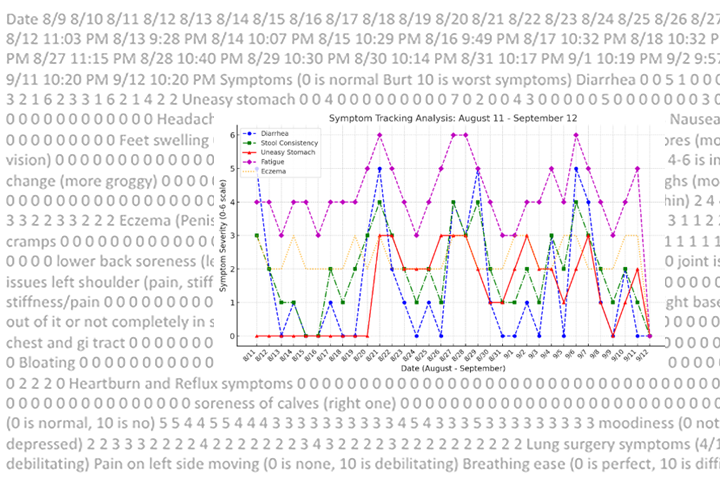How to Eat After a Whipple Procedure

The Whipple procedure can be life-saving surgery, but it is also life-altering.
Depending on where your cancer is located, different parts of your digestive system may be removed and rearranged. This affects how your body digests food, which means what and how you eat may be completely upended. Some people become diabetic; others require enzymes and supplements; and others are hardly affected.
Let’s Win sat down with Ann Ogden, founder of Cook for Your Life, a website created to help cancer patients eat healthily during and after treatment. Ogden started down this path in 2007, after her breast cancer diagnosis. She realized that her cooking skills helped her cope with the changes in taste and digestion issues caused by chemotherapy, as well as meeting nutritional needs. But other patients she spoke to did not know what to do.
After she recovered, Ogden decided to end her career in fashion, and turned her attention to helping other cancer patients. She began working with dieticians and nutritionists and subsequently worked with researchers in the Department of Epidemiology at Columbia University’s Mailman School of Public Health on a project to change food behaviors in Hispanic breast cancer survivors, to increase their fresh fruit and vegetable intake and decrease fats by adapting traditional recipes. Ogden’s work has been part of two National Institutes of Health-funded randomized studies.
Ogden started working with Whipple procedure patients in December 2016, after participating in a pancreatic cancer Twitter chat.
Let’s Win: Are there diet tips specific to pancreatic cancer patients or are the general cancer tips fine?
Ann Ogden: Pancreatic cancer patients are encouraged to eat the same high fruit and vegetable, whole-grain, lean protein diet recommended to all cancer patients. Both the cancer and the treatment affect the digestive system, whether you have had surgery or not.
LW: What makes it necessary for someone who has had a Whipple to eat differently?
AO: Whipple surgery effectively reorganizes the body’s digestive system by cutting away parts of the pancreas, removing the bile duct, and in some cases, other portions of the digestive system like the small intestine and parts of the stomach. The surgeon then reconnects what is left. This means that the body has to learn to adapt to its new digestive set-up, which can cause the patient varying degrees of digestive discomfort depending on how radical the surgery has been.
Many of these patients have to take pancreatic enzymes to help them digest their food, and problems can occur when these enzymes are not taken in the right way. It is particularly important for Whipple patients to work with a registered dietician so that they fully understand how to use the pancreatic enzymes and when to take them, so they can enjoy eating a wide variety of foods.
LW: What kind of diet works best for someone who has had a Whipple?
AO: There is no one specific diet recommended for someone after Whipple surgery. Every patient reacts differently. Some will struggle with diet, while others may have no problems at all. For this reason, patients are often told to eat whatever they can. This advice can feel distressingly vague, especially if issues do arise.
For example, foods someone previously enjoyed may become difficult to eat or digest. For anyone in this position, it’s important to keep going and keep your weight up, however difficult. Too much weight loss can lead to malnutrition, which in turn leads to more fatigue and a slower recovery. That’s why I recommend that people who have had the Whipple work with a registered dietician at their hospital.
Here are some very basic tips to help you navigate eating as you recover from surgery:
- Focus on eating enough protein, as this will help the body to recover after the surgery.
- Avoid foods high in insoluble fiber, such as whole grains, as many find them hard to digest immediately after surgery.
- Until your system settles down, eat “white” foods, such as white rice, pasta, bread, and crackers. And peel all fruits and vegetables.
- Very fatty foods can also cause problems, which may need to be managed by correctly using pancreatic enzymes. Your medical team should be able to advise you about this.
- As you recover, it is a good idea to focus on adding back the foods you enjoy, one at a time.
One important point is to keep a food diary—a list of everything you eat, and the time of day you ate it. This will help you identify foods that cause digestive issues. You can let your dietician know about any adverse effects you experience, and the foods they are connected to.
LW: Are there specific post-treatment recommendations regarding diet?
AO: Here are some general diet tips for post-Whipple patients:
- Focus primarily on getting enough calories and protein, which will ensure that you recover well. Good sources of protein include lean meat such as chicken, turkey, fish, eggs, dairy products, beans, and nuts. When preparing a meal pair your lean protein with an easily-digested form of carbohydrate such as potatoes or white rice or pasta for some comfort and extra calories.
- Ditch the idea of three square meals. Aim to eat little and often, around five or six times per day. Eat small, nutritious snacks in between meals and drink nutritious drinks.
- Take time to chew your food well. The first part of digestion starts in the mouth, as saliva contains enzymes which help begin the breakdown of food. Chewing food well will make it easier for the digestive system to do its job.
- Drink enough fluids. Fluids are very important for patients to avoid dehydration. But remember, it’s best to avoid filling up on fluids too much before meals. Drink liquids either 30 minutes before or after a meal, and only sip enough liquid with your meal to help the food go down. If water tastes strange to you because of the chemotherapy drugs, instead of soda, try tea made with ginger, mint, or fennel. Flavored waters are also good options.
- Malabsorption of vitamins can be an issue, so ask your doctor if he or she would recommend that you take a daily multivitamin.
As mentioned above, if you find that you are having issues digesting fat, it’s important that you speak to your doctor about taking pancreatic enzymes. Most patients will lose weight after surgery, and since fat is an excellent source of calories to help gain it back, it is better to try to manage any fat digestion issues medically rather than by simply cutting back on it. The changes in the digestive system can bring on malnutrition, an unsought-for side effect.
LW: What are some common problems people have after the Whipple?
AO: There are a variety of problems that may occur after the surgery.
- Some patients may struggle with delayed stomach emptying, which causes nausea. If this is the case, choose lower fiber, lower fat foods and continue to focus on eating little and often.
- For other patients, the opposite can be true: food leaves the stomach too quickly, causing dumping syndrome—abdominal cramps and diarrhea. This is particularly triggered by foods high in sugar, such as baked goods or sodas. To satisfy cravings for sweets, try some dishes that are lower in sugar and will provide nutrients to help your recovery.
- Some patients may find that they cannot tolerate dairy. Lactose intolerance can develop due to the parts of the digestive system that were removed. If you notice that you have gas, bloating, or diarrhea after eating or drinking dairy, try a lactose-free product to see if that helps.
- If you find that your tastes have altered, try using different herbs to give things more flavor. Cook for Your Life has many recipes that use different flavorings.
In the end these are all just rough guidelines. Listen to your body, and experiment with different foods and flavors until you find what works for you and your new gastrointestinal system. This is where your food diary will be a great help.
If you need more inspiration, head to the Cook for Your Life website for great meal ideas. The site has a unique search filter to help you find easy, tasty recipes, even for clinically-recommended bland or low-fiber diets. The recipes can generally help get you through all stages of cancer treatment.



